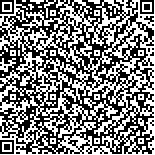| 摘要: |
| 首次报道了南海西部上层水体今生颗石藻的物种组成、群落结构和分布。根据 2007 年 9月在南海西部海域(11°—15°N, 110°—114°E)32个站位采集的 200 m以浅 208个颗石藻样品在偏光显微镜下的分析结果, 研究了该海域颗石藻群落特征, 并进行了颗石藻与环境因子的典范对应分析(CCA)。调查区共发现 20 种今生颗石藻, 其优势物种为赫氏艾密里藻 Emiliania huxleyi (Lohmann) Hay et Mohler、大洋桥石藻 Gephyrocapsa oceanica Kamptner、深水花球藻 Florisphaera profunda Okada et Honjo、纤细伞球藻 Umbellosphaera tenuis (Kamptner) Paasche 和艾氏桥石藻 Gephyrocapsa ericsonii McIntyre et Bé。 本次调查中, 今生颗石藻的细胞丰度在 2.97—32960.06 cells/L 之间, 平均值为 3340.75 cells/L。整个研究海域中, 今生颗石藻的分布呈现出一定的团块分布现象, 调查区大部分站位均是赫氏艾密里藻和大洋桥石藻占有较高的相对细胞丰度, 这两种藻的分布刻画了整个今生颗石藻群落在调查区的分布, 它们多分布在50 m和75 m水层, 且集中在西北部和西南部, 水柱积分颗石藻平面分布也是如此。与以上两种藻的分布不同, 深水花球藻则多分布于 50 m 以深至 200 m, 特别是50—75 m水层的西北和东南部海域, 而纤细条伞球藻则多集中在调查区25 m水层的北部海域。 |
| 关键词: 今生颗石藻, 南海西部, 物种组成, 分布, 赫氏艾密里藻, 大洋桥石藻 |
| DOI:10.11693/hyhz201102002002 |
| 分类号: |
| 基金项目:国家自然科学基金项目, 40776093、 405210003 和 90711006 号; 中国科学院知识创新重点项目, KZCX2-YW-QN205 号; 国家重点基础研究发展计划(973)项目, 2009CB421202 号 |
|
| LIVING COCCOLITHOPHORES IN THE WESTERN SOUTH CHINA SEA IN SUMMER 2007 |
|
SUN Jun1, AN Bai-Zheng1, DAI Min-Han2, LI Tie-Gang1
|
|
1.Institute of Oceanology, Chinese Academy of Sciences;2.State Key Laboratory of Marine Environmental Science, Xiamen University
|
| Abstract: |
| We carried out an investigation on living coccolithophores (LC) and their community structure in western South China Sea (11°—15°N, 110°—114°E) in summer 2007. 208 samples from the upper seawaters (less than 200 m depth) were taken at 32 grid stations. A total of 20 taxa belonging to Coccolithophyceae were identified by filtered samples under polarizing microscope. The common species were Emiliania huxleyi (Lohmann) Hay et Mohler, Gephyrocapsa oceanica Kamptner, Florisphaera profunda Okada et Honjo, Umbellosphaera tenuis (Kamptner) Paasche and Gephyrocapsa ericsonii McIntyre et Bé, etc. among which E. huxleyi and G. oceanica were dominated. The average cell abundance of LC was ranged from 2.97—32960.06 cells/L, with an average 3340.75 cells/L during this investigation. The space pattern of LC was patchness and mosaicism with relative high density. E. huxleyi and G. oceanica were distributed widely and abundantly at each station, which can represent the pattern of LC during the investigation, and mostly thrived at 50 and 75 m depth in the northwest and southwest part of the survey area. Differently with the above two coccolithophores, F. profunda was mainly distributed in water depth deeper than 50 m, especially between 50 and 75m in the northwest and southeast part of the survey area, and U. tenuis in shallow water above 25m depth in the north part of the survey area. |
| Key words: Living coccolithophore, Western South China Sea, Species composition, Distribution, Emiliania huxleyi, Gephyrocapsa oceanica |
